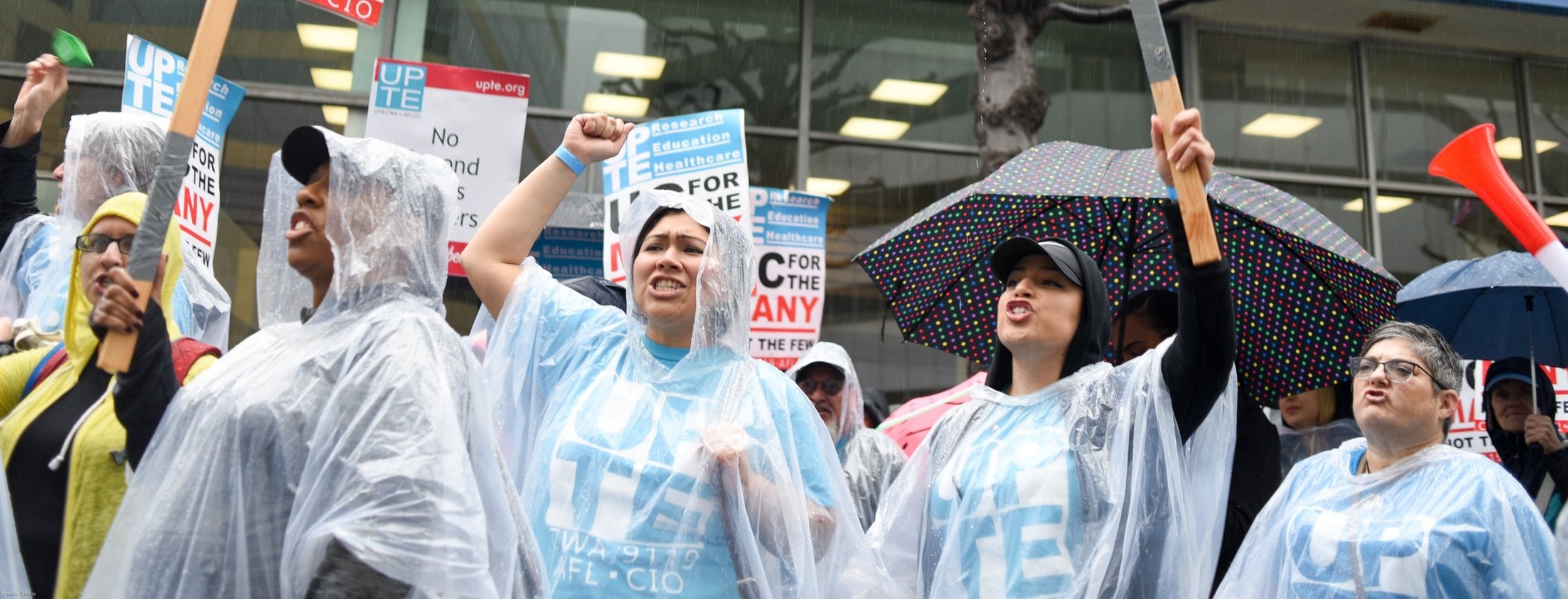
What happens during impasse?
Bargaining between UPTE and UC is governed by the California Public Employment Relations Board (PERB). The process for resolving disputes at the bargaining table is referred to as the “impasse” process.
There is no defined timeline but the entire process typically takes a few months between the time that impasse is declared and final impasse, when UPTE can strike over economic demands and UC can impose certain proposals.
The “impasse” process doesn’t force UC or UPTE to change their bargaining proposals. Pressuring UC to make a fair offer is still up to UPTE members’ actions: before, during, and after impasse. UPTE can still strike in response to UC’s unfair labor practices during and after the impasse process.
So what happens during the impasse process? Read about the four steps below:
-
Impasse is declared when the parties’ differences are so substantial or their positions so entrenched that further negotiation will not be fruitful without external assistance. Either side may declare impasse, and PERB will certify that an impasse exists if, after reviewing the situation, it concludes that further negotiations are not likely to produce an agreement.
-
A mediator joins discussions as a neutral third party. The mediator’s job is to meet with the union and UC—sometimes together, sometimes separately—to explore ways to bridge the gap between proposals.
Mediation is a confidential process, allowing both sides to candidly discuss potential compromises. The mediator does not have the power to impose an agreement, but rather assists in generating settlement options.
-
A factfinding panel typically consists of three members: one appointed by the union, one appointed by the employer, and a neutral chair (often selected from a list provided by PERB).
The panel conducts hearings, reviews evidence (including financial data, bargaining history, and comparable agreements), and may hold additional discussions with each side.
After reviewing all evidence, the factfinding panel issues a written report with advisory recommendations on how the dispute might be resolved. The parties are encouraged to use this report as a basis for renewed negotiations.
-
If no agreement is reached after exhausting impasse procedures (mediation and factfinding), the parties are considered to be at “final impasse.”
The union may strike over its economic demands and the employer may impose parts of its proposal, including pay increases, though not any unilateral changes, waivers, or discretionary changes.
Anything imposed by the employer can still be changed or reversed as part of a final agreement.
